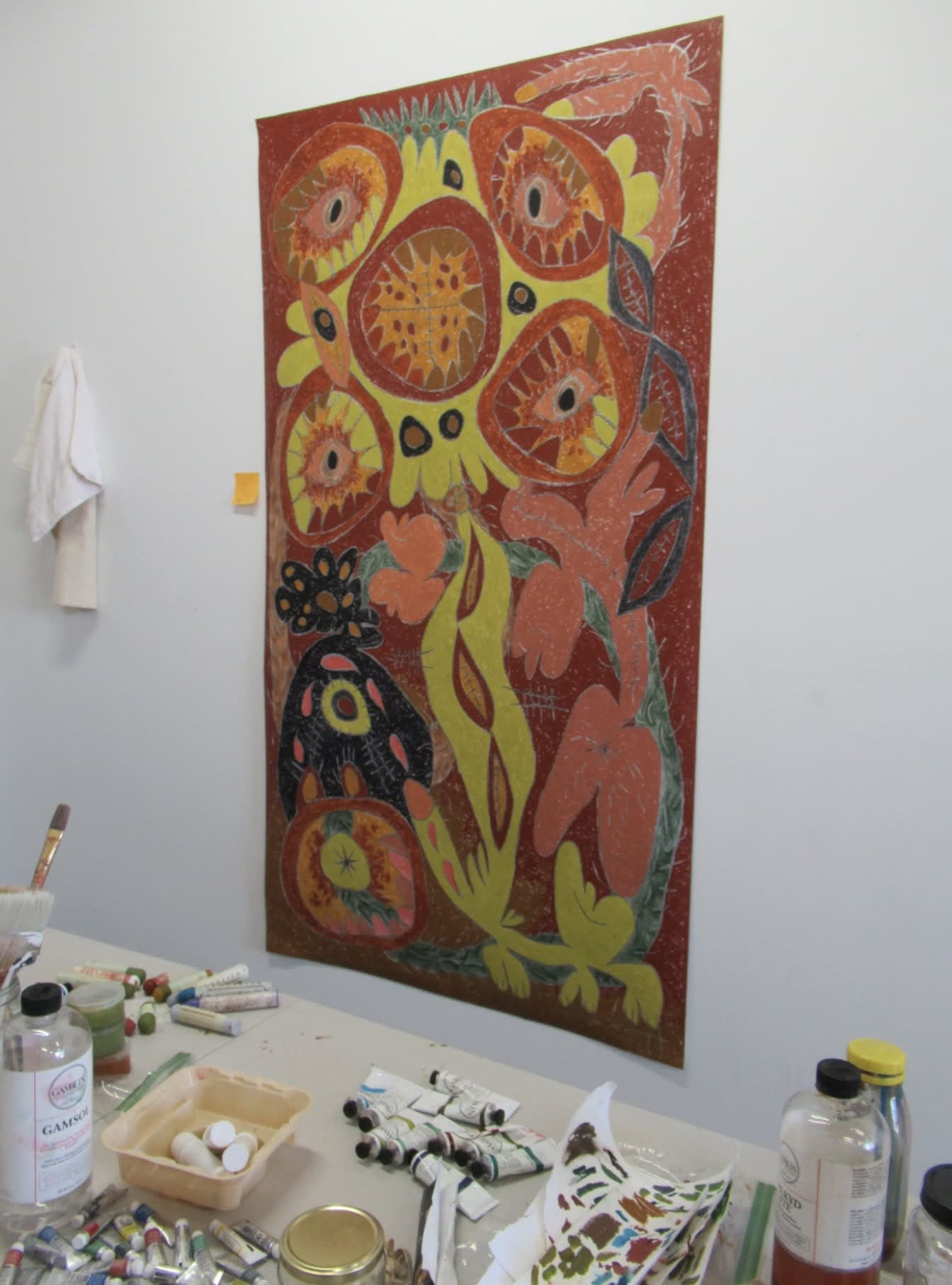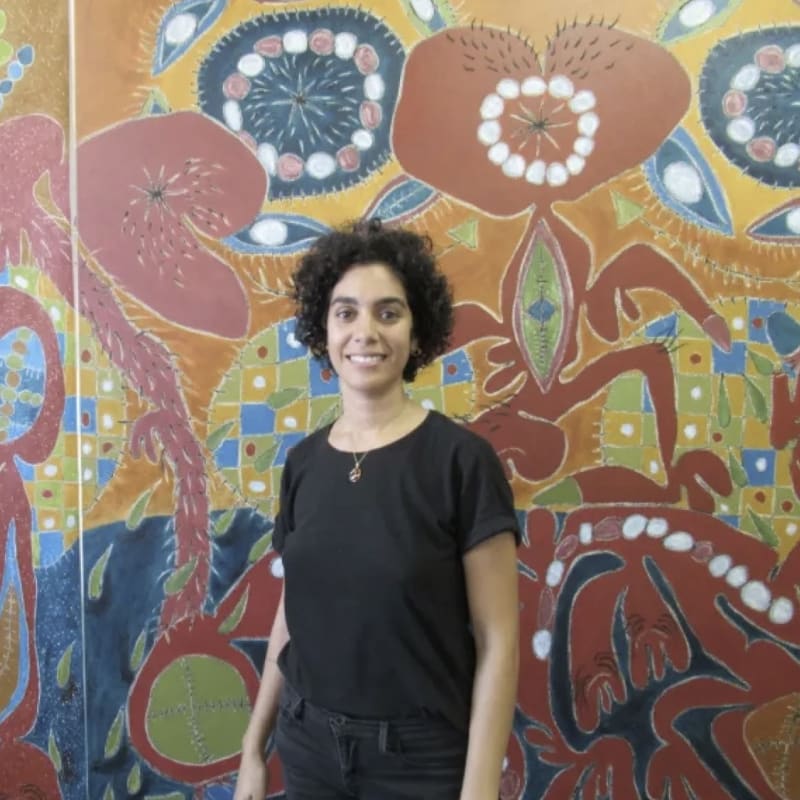Nasim Hantehzadeh: A Boundless Universe
“Schools serve the same social function as prisons and mental institutions- to define, classify, control, and regulate people.” ~Michel Foucault, “Discipline and Punishment”
“…despite all of our desperate, eternal attempts to separate, contain and mend, categories always leak.” ~Trihn T. Minh-ha, “Women, Native, Other: Writing Postcoloniality and Feminism”
The language of art is shaped by forces from within and without- history, society, and culture seek to define and control us; our behavior is often shaped by the expectations imposed upon us by normative modes of thought. Artistic creation can be a means to analyze and deconstruct systems of control. The supple fluidity of thought and form allows one to create images and metaphors that reflect efforts to deconstruct these forces and to free one’s self from systems of control.
Gender, race, class, religion, body type and myriad other categories become objects of mind that shape the lens through which we are perceived in the world. The subjective valuation of the ‘other’ can be an emotional force of violence that defines us and places us within categories that can act as a form of oppression.
The artist Nasim Hantehzadeh’s work is a form of analysis, deconstruction and rebuilding a language of form that shapes content into a fluid, metaphoric, liminal space. The ideas and ethos that informs her work comes from her experiences in the world. She said of herself, “I was born in America but raised in Iran. I returned to the United States at twenty-two and did not speak English. When I arrived as an American citizen with an American passport who did not speak English and my looks and body language were very different than an American, I suddenly found myself in an indeterminate space. I have lived in the United States for nine years and I even feel that ‘in betweenness’ more intensely. For instance, if I have my family visit me in the US and I walk into a store with my mom and sister, we are seen as women with brown skin and an accent. It feels like that we are defined by our look and that certain expectations shape the way people perceive us.” These are forms of definition and categorization that Nasim seeks to deconstruct in her work; to create a language of fluidity that diffuses categories and to map out the subtle spaces in-between.
Nasim works in both drawing and painting; she feels that the higher economic value placed on painting over drawing is a historical bias that is arbitrary and outdated. She moves between the two and also combines them, as in the triptych she is currently working on in her studio. These dualities of subjective value become another metaphor of the space between categories for her, weaving another element in the effort at breaking down definitions in her art.
She works in an intuitive and spontaneous approach; the fecundity of her imagination allowing the biomorphic forms to move freely from image to abstraction, integrating elements suggestive of viscera, male and female genitalia, orifices and eyes, in a free wheeling interplay of narrative and pure formal invention. These hybridized forms are poetic metaphors of a fluid world where categories are less defined and gender is not limited to male or female, but is non-binary and open to a world in flux- guided by the needs of the heart. The images ricochet through history: there are suggestions of Paleolithic cave paintings, Australian and African tribal art, surrealism and allusions to extraterrestrial alien beings. They have a lightness and a weight simultaneously- both playful and serious; they pulsate with the rhythmic cadences of the world ever-becoming; the snake shedding its skin to be renewed and a world reborn with each shift in the human consciousness.

Nasim Hantehzadeh; Photo credit Gary Brewer.
Nasim works in a large scale, the bigger pieces measuring up to 8×12 feet. On some, she uses large sticks of oil pastel on paper, applied with a loose physicality- the marks and gestures recording the action of her hand and arm movement. She also works with oil on canvas, applying the paint in thin washes upon which oil pastels are applied. The scale gives her arm movement the freedom to discover biomorphic forms from a fully engaged action approach to drawing. The biomorphic abstraction transitioning into figuration arises through intention and intuition and from the interplay of memories intermingling with the present. Somatic memory and impulse flow through her mind and fingertips; discovering these chimerical amalgams of form and content, her imagery is a wondrous fruit culled from the rich cultural tree of human history.
Our current world, filled with political unrest and the Coronavirus, has seeped into her work. A large triptych she has been working on for months was initially titled “It smells like springtime” but was adapted to the sounds and smells of the protests just beyond her studio window in DTLA. The title is still a work in progress but became more of a narrative pointing to the complexity of this moment; “It smells like springtime, sounds like fireworks and bullets, feels like soft bed sheets”. In another piece she created an image that abstractly represented the fear and beauty of a friend who just gave birth during this Covid 19 plague; the anxiety of this moment mixed with the joy of begetting a new life, animating the image.
When I asked her what she was doing as an artist, she responded. ”I need to make art every day. If I don’t make art for more than a day or two I become physically sick. Making paintings and drawings is a way for me to process my emotions. When I start making work, I feel like I enter a state of mind where I can have access to my memories, however a lot of memories are shaped and reshaped by my current experiences. Sometimes the present and the current experiences are more vivid to me, other times the memories from the past become so powerful. In some pieces they merge together.”
We are shaped and defined by histories, familial, political, religious and the genetic imprints that carry within us the behavioral traits and attitudes of our ancestors. Each person is an amalgam of forces that are confronted with the present, a present that is always in flux. How do we redefine ourselves and use memory and imagination to change the contours of our thoughts and beliefs- and in so doing- change the world?
Art plays a role as a symbol and a reflection of the shifts in consciousness that convulse society through time. An image can convey complex ideas that are metaphors of a world in transition; art is a barometer of change and of shifting paradigms as each zeitgeist in society unfolds.
Nasim Hantehzadeh seeks to create an art that reflects the interior process of her experiences in the world and her effort to deconstruct the modes of thought that designate and control our identities. It is a profound quest to create metaphors of a world less fixed on defining one another; of creating a space where one can breathe more fully, in air free from the smoke of history. These are worlds of beauty that exist in the heart of a poet; however beauty is nothing but an eternal quality of mind that we seek in this physical world- this world filled with imperfection and the complexity of the human heart.
These are bold works that convey complex ideas: they express joy, anxiety, beauty and the artist’s longing for a more open world, a world that allows space for each of us to inhabit. Art is a boundless universe. It is supple and fluid; indeed, the ability of a metaphor to shape shift and retain meaning through time and place makes art a deeper form of truth than facts and definitions, these erode through time with the changes in our understanding of the world, and the shifting tides of consciousness. Nasim’s ambition is a beautiful endeavor; she is mapping a world yet to become; her works are seeds for a flower still unfolding.

